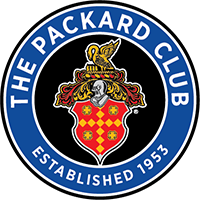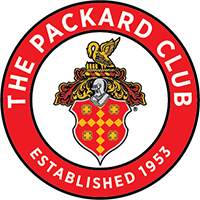2010: The Centenary of The Packard, by Richard M. Langworth
Over a century has passed since Packard General Manager Alvan Macauley introduced the first issue of The Packard in June 1910: "I am much pleased with the idea of publishing a periodical intended to circulate among all who are interested in Packard welfare….preachments intended to make clear to all who read what a wonderful piece of mechanism a Packard car is."
And for twenty-one years that is just what Packard's house organ accomplished: in the words of Jim Bradley, "a priceless record," evoking "the young company's aspirations and philosophy. Detailed reports of technical developments, lengthy stories on construction of everything from car bodies to steering wheels, accounts of cross country trips in Packards, dealer news, essays on the efficacy of square dealing, advice to owners."
Sophisticated, engaging, humorous and joyful, The Packard was largely the work of two successive advertising managers, its first two editors. Ralph Estep, was a short, bespectacled gent with a prodigious education, a warm style, and a sure sense for quality and the elegant phrase. Before Estep, Bradley wrote, "Packard ads verged on the amateurish—loudly assertive of feats, runs. reliability trials and speed records….Estep quickly imparted to Packard advertising the same aura of class and sophistication the company tried to implant in its sales agencies and the cars themselves."
Estep's sharp humor was evident in columns such as "Seth Saith" (with quotes from the Brownings, Tennyson, Rabbi Ben Ezra) and "Replies to the Curious," a Q&A department which, however amusing, packed serious messages about Packard quality. "What are the names of the different parts of the machinery under the car floor?"…."It depends largely on the car, the extent of the floor and whether you look the names up in the parts price list….Anyway, among Packard owners very little is known about what is underneath the car floor."
Estep's successor was his deputy, Frank Eastman, who exhibited no less the refined tastes as his predecessor. It was Eastman who developed The Packard's highly diverse covers — no two alike, with the best illustrators in the world: "Hy" Thiede, Earl Horter, R.S. Heinrich. And Eastman possessed the same piquant sense of humor. In 1913, when Harry K. Thaw, murderer of Stanford White, escaped from the Matteawan Asylum for the Criminally Insane in a Packard Six, Eastman wrote: "When dependability is vital; when high speed is necessary; when a fast getaway is absolutely imperative, Ask The Man Who Owns One."
In the 1920s The Packard was reborn The Packard Magazine, a masterpiece of the Art Deco age, with elegant typefaces, vignetted photography, John Held's inimitable "Joe College and Flapper" cartoons, and striking four-color artwork. Through 1931, when it fell victim to the Depression, it was the essence of the company and its aristocratic clientele—as much at home on wicker settees or glass topped conservatory tables as The Literary Digest.
When The Packard Club's quarterly magazine was redesigned as The Packard Cormorant in 1975, it adopted The Packard Magazine's cover styIe, wide margins, logos and typefaces and, occasionally, its engaging style—a quality marked by few automotive house organs. Indeed The Packard had set an impeccable standard.
You can read the full article, "The Packard": Ne Plus Ultra of Automotive House Organs, on Richard's site.









































































































